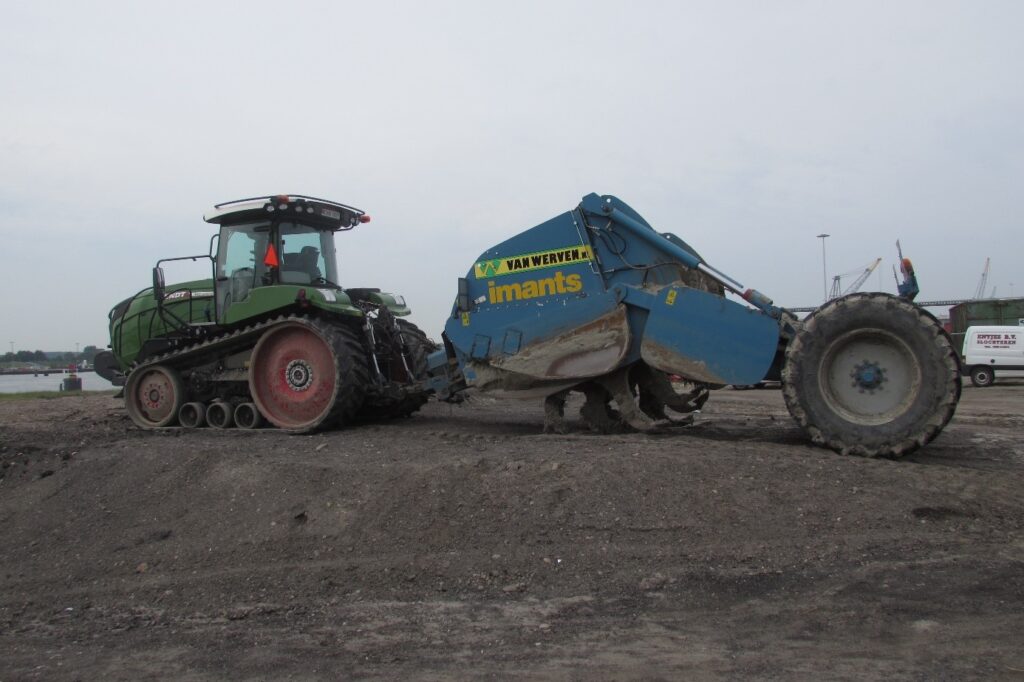Construction
Construction of the sandy base
During 2017, the sandy base layer was brought into place. The sand for the base layer was dredged in the vicinity of the project area. The height of the base layer is of importance, because salt marsh vegetation develops at a height starting around mean high water (MHW). During the implementation of the base layer, a few practical problems occured. Sand was blown away after placement. Also consolidation was larger than calculated. Therefore, the bed level height was lower than anticipated. This delayed the construction of the base layer and consequently also the start of the pilot.
Mixing of mud in the top layer of the bed
In November 2018 the sand was mixed with mud to be able to test the effect of mud enrichment on salt marsh development. The mud was brought in from a land depot where dredged material was stored from a local port extension project. The dredged sediment had been consolidated to a rather firm clayey soil that was transported by trucks to the experimental site. The mixing of the soil through the top 1.0 m of the sandy bed was achieved with a deep spader (Imants 135SX265PL) pulled by a tractor. For the 5% compartments a layer of 8 cm of soil was placed on top of the sand and mixed through. For the 20% compartments a layer of 30 cm of sand was removed and replaced with soil and subsequently mixed through. For the 50% compartments a layer of 1 m of sand was removed, replaced with 80 cm of soil and covered with a bearing layer of 20 cm of sand for the heavy machines, and subsequently mixed through. In total 35,000 m3 of clayey soil was applied.

Sowing glasswort
In May 2019, glasswort seeds were seeded in a few sections of the pilot salt marsh. The preparation for this started much earlier. In the autumn of 2017, a total of 13,500 glasswort plants (Salicornia procumbens) were manually collected from a nearby salt marsh. The plants were stored over winter for vernalization; the induction of a plant’s flowering process by exposure to prolonged cold. One week before seeding, the plants were cut into a hundred pieces. The 1.35 million plant fragments were mixed with sawdust and put in freshwater for three days to start the germination process of the seeds. Eventually, in May 2019 the mixture of wetted plant fragments and sawdust was manually spread out in a density of 50/m2 in parts of the salt marsh compartments E, F and G.
